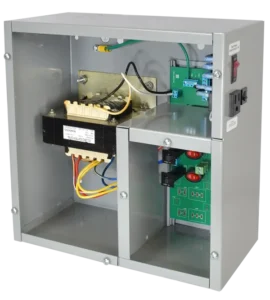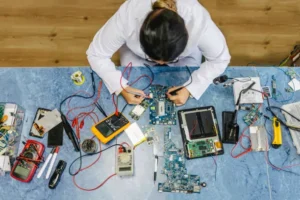Quick Leads
How to Safely Discharge a Capacitor for High-Quality IoT Devices: A Step-by-Step Guide for Engineers
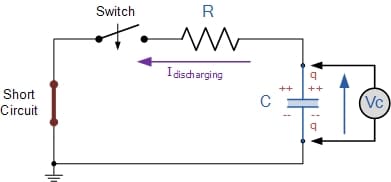
Why Proper Capacitor Discharge is Essential for IoT Devices
If you’re working on high-quality IoT devices like Shelly’s smart thermostatic radiator valves, capacitor discharge isn’t something you can skip. When capacitors store energy, they can create unpredictable results in the final device if not safely discharged. For example, improperly handled capacitors can cause:
- Unpredictable circuit behavior: Inconsistent power delivery can interfere with sensitive components in your IoT devices.
- Safety hazards: Capacitors, if discharged incorrectly, can lead to electric shock or spark components that might cause damage.
- Manufacturing defects: If capacitors aren’t discharged during the assembly process, they can lead to performance failures in the final product.
Shelly, for instance, needs to ensure every product, like their thermostatic valve, is durable and operates seamlessly in high-volume production. That’s where safe capacitor discharge becomes crucial to their success.
This article from TME provides detailed guidance on the safest methods to discharge capacitors, including using resistors and the necessary precautions to take for various capacitor sizes and voltage levels:
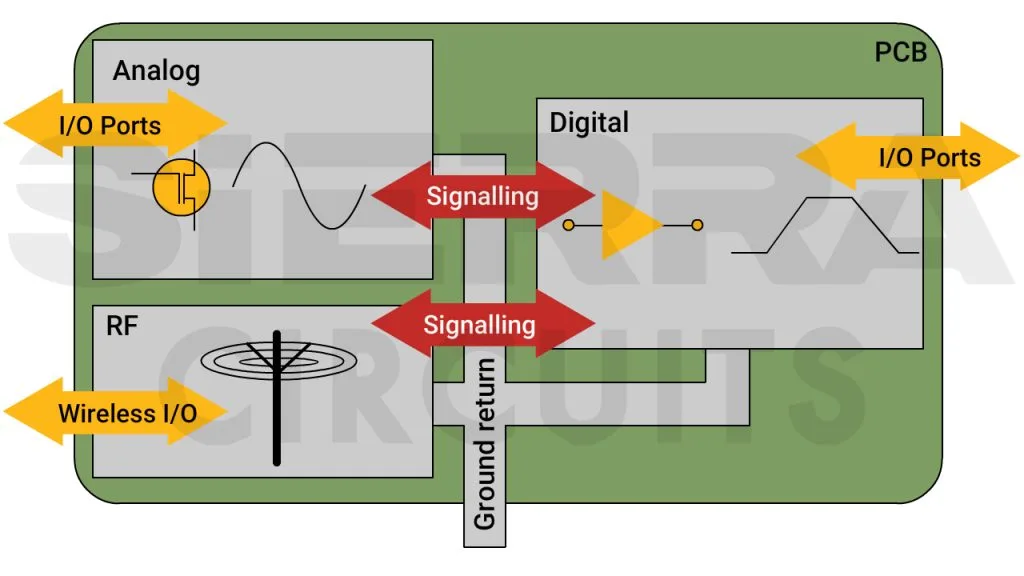
Can a Voltmeter Discharge a Capacitor?
You might think that using a voltmeter can discharge a capacitor, but it doesn’t work that way. A voltmeter can measure the voltage across the capacitor, but it doesn’t discharge it. To properly release the stored charge in a capacitor, you need to use a resistor or a discharge tool.
While a voltmeter helps in IoT device development to measure voltage (essential for products like Shelly’s IoT devices), you’ll need a separate tool to safely discharge capacitors without risking damage. When working with high-precision, high-volume IoT assemblies, don’t skip the discharge step to avoid costly defects and downtime.
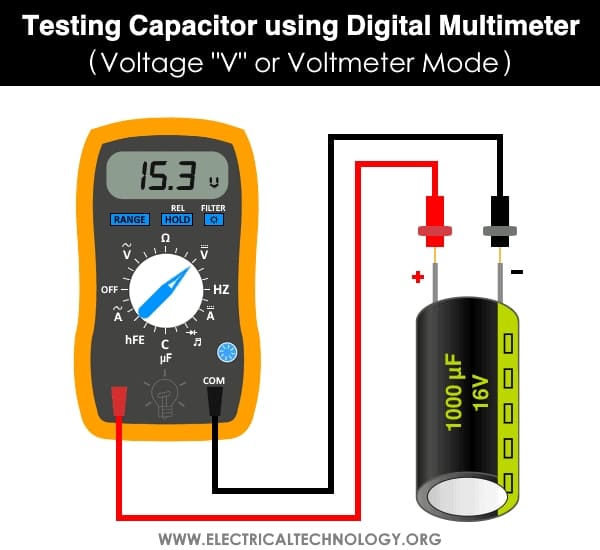
How to Discharge a 450V Capacitor with a Multimeter
Discharging a 450V capacitor requires extra caution, especially when dealing with sensitive IoT products. For instance, Shelly’s smart thermostatic valve may contain capacitors that could store significant charge. Here’s how you can safely discharge them:
- Cut off power: Ensure the system is powered down. You don’t want to discharge a capacitor while the system is live.
- Use a high-resistance resistor: A 5-watt, 20,000-ohm resistor works well for capacitors in this range. Attach it to the positive and negative terminals of the capacitor.
- Wait for the capacitor to discharge: Depending on the capacitor’s size, this might take a few seconds. Ensure you’re not rushing this process.
- Check voltage: After waiting, measure the voltage using your multimeter. Once it reads close to 0V, you’re safe to proceed with the assembly.
Taking the time to properly discharge high-voltage capacitors like this prevents unexpected failures in the assembly process and ensures your IoT products stay reliable.
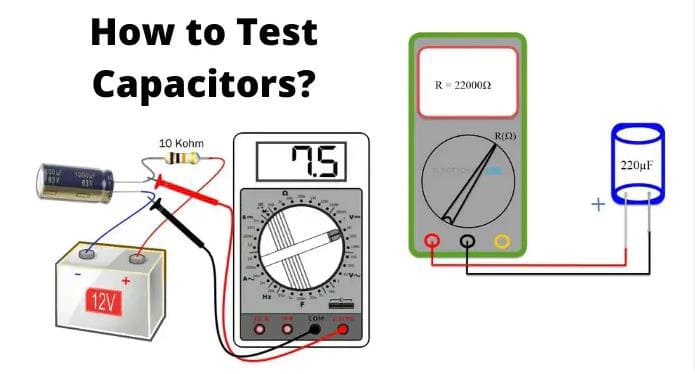
How to Discharge a Capacitor with a Resistor
Discharging capacitors using a resistor is one of the most common methods. Here’s a step-by-step guide that will be valuable whether you’re working on low or high-volume PCB assemblies for smart devices like Shelly’s thermostatic valve:
- Choose the right resistor: For a safe discharge, you want a high-resistance resistor, typically between 10kΩ and 100kΩ.
- Connect the resistor: Place one end of the resistor on the capacitor’s positive terminal and the other on the negative terminal.
- Wait for discharge: It might take a few moments, but this gradual discharge ensures the capacitor’s energy is safely released.
- Measure with a multimeter: After waiting, check the voltage with your multimeter to ensure it’s close to 0V.
By using this method, you’re ensuring the process is controlled and safe. This is especially important when working on high-volume production for IoT devices where consistency is key.

Discharging a Capacitor in a Circuit: What Tools to Use
When discharging a capacitor that’s part of a live circuit, like those in smart thermostatic valves, you need to be particularly cautious. Using a dedicated discharge tool or high-resistance resistor is the safest way to remove the stored charge.
Steps to discharge safely:
- Ensure the circuit is powered down: Disconnect power completely.
- Use the correct tool: A capacitor discharge tool or high-resistance resistor should be connected across the capacitor terminals.
- Verify with a multimeter: Always check the voltage with your multimeter before proceeding with assembly.
Discharging capacitors correctly will not only ensure safety but also protect sensitive IoT circuit components from potential damage. For companies like Shelly, where each component must meet high standards, this step is vital.

Capacitor Discharge Tool: A Must-Have for Precision Assembly
In high-quality IoT device production, a capacitor discharge tool is essential for ensuring precision and efficiency. These tools allow for the controlled discharge of capacitors without the need for manually placing resistors.
When working with products like Shelly’s smart thermostatic radiator valve or any other high-precision IoT product, using a discharge tool speeds up the process, reduces risk, and ensures the capacitors are discharged safely every time. Whether you’re handling small-scale prototype designs or high-volume production, this tool will save you time and ensure reliability in the final product.
Frequently Asked Questions
To safely discharge a capacitor without damaging your circuit, use a high-resistance resistor (10kΩ or higher) or a discharge tool. Always measure with a multimeter to ensure the capacitor is fully discharged before handling.
The quickest method is using a low-resistance resistor (1kΩ), but you must be careful. For sensitive IoT devices, it’s better to use a high-resistance resistor or discharge tool, even if it takes longer, to prevent any damage.
Yes, using the multimeter in diode mode allows you to slowly discharge a capacitor. This works best for small, low-voltage capacitors. For large capacitors, it’s better to use a discharge tool.
Discharging capacitors is critical to ensure safety and device reliability. Improper discharge can lead to electrical hazards and functional failures. Properly discharging capacitors ensures Shelly’s IoT products meet performance and safety standards, preventing defects during high-volume assembly.
Limited Time Offer:
Get $100 off your order TODAY!
 Trusted by 100+ businesses worldwide
Trusted by 100+ businesses worldwide No hidden fees – transparent pricing
No hidden fees – transparent pricing Guaranteed quality with on-time deliver
Guaranteed quality with on-time deliverConclusion
Properly discharging capacitors is vital for ensuring the safety and reliability of IoT products. Whether you’re working on Shelly’s smart thermostatic radiator valves or other high-volume devices, following the right steps ensures your assembly process remains smooth and efficient. Ready to start your PCB assembly project? Let’s talk!
Are you ready to streamline your PCB assembly for high-quality IoT devices like Shelly’s smart thermostatic valves? Contact us today to ensure your products are built with precision, safety, and scalability in mind.
Have Specific Requirements?
We’re here to help! Whether it’s a custom PCB design, assembly, or sourcing components, feel free to reach out to us directly. Our team is ready to provide tailored solutions for your project. Contact Us Today for more information.
Additional Resources:
- How to Repair Circuit Boards: A Step-by-Step Beginner’s Guide
- Capacitor on Circuit Board: A Comprehensive Guide
- What Are PCB Conformal Coatings? Types, Benefits, and Applications Explained
- SMD Size Codes Explained: A Complete Guide to Understanding Surface-Mount Component Dimensions
- AC vs DC: Key Differences, Applications, and Advantages in Modern Electronics
Request for Quote
RECENT POSTS

Top 10 EMS Companies for Wearable Electronics in 2026 [Fast Prototyping & No MOQ]
Discover the top EMS companies for wearable electronics in 2026 offering fast prototyping, no MOQ,

Why PCB Panelization is Essential for Efficient Assembly and Cost Optimization?
Discover why PCB panelization is key to efficient SMT/THT assembly. Cut costs, reduce errors, and
RELATED POSTS
Leading PCBA Manufacturer
✅ Assemble 20 PCBAS for $0 ✅ Get $100 OFF – Risk-Free Trial!
✅ 100+ Satisfied Customers
✅ Ensured Quality & On-Time Delivery
✅ Free Trial, No Commitments!


